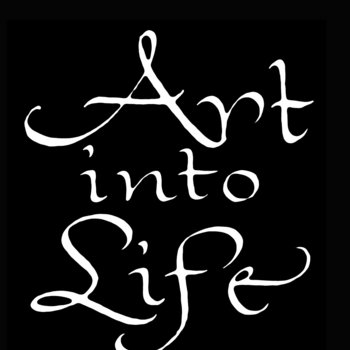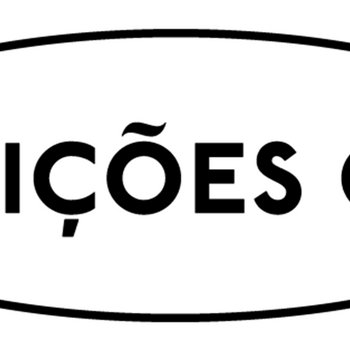
Bandcamp hosts an amazing array of field recordings from around the world, made by musicians and sound artists as well as professional field recordists. In this column, we highlight the best sounds recorded outside the studio and released in the last month. This installment features recordings from the churches of England to the forests of Argentina, from islands across the Atlantic to the plains of Australia, from pure nature recordings to postmodern simulations.


Alan Lamb, who passed away earlier this year, was a giant in the field of environmental sound. His landmark work was based on a literal landmark: the Faraway Wind Organ, a half-mile stretch of abandoned telephone poles that he purchased from the Australian government for $10. Throughout the 1980s, Lamb recorded the wind activating the six wires strung across this length. The results are shockingly dramatic. Waves of sound build and crash as the wind rises, sci-fi laser sounds ping and zip as insects collide with the wires, and in the background, distant calls of Australian wildlife evoke the vastness of the landscape. Room40 has recently begun reissuing Lamb’s work and Archival Recordings is a welcome addition. Originally recorded in 1981 and 1983, respectively, “Primal Image” and “Beauty” capture the Wind Organ at its best. “Primal Image” is a story of dynamics, with peaceful lulls counterposed against teeth-gritting intensity. “Beauty,” on the other hand, is a dense, steady drone edited and layered from 20 hours of recording time. There will never be another Faraway Wind Organ, and there will never be another Alan Lamb, but luckily we have these remarkable recordings to remember them both.


In 1969, Irv Teibel discovered the calming effect of ocean sounds. The problem was that the real ocean didn’t sound enough like the ocean in his head—it would have to be edited, massaged, perfected. He took his ocean recording to IBM’s Bell Labs, a pioneering center for computer voice synthesis. With the help of neuropsychologist Louis Gerstman, Teibel tweaked his seven-minute clip of waves on Coney Island’s beach into “The Psychologically Ultimate Seashore,” 30 minutes of watery bliss. This was the first release in the Environments series and the first field recording smash hit. Eleven total Environments albums were released throughout the ‘70s, featuring thunderstorms, swamps, and meadows. Today, Teibel’s instinct to create soundscapes better than nature’s own has led to a strange reversal: real jungle sounds are edited into suites to be piped into gorilla enclosures at the zoo; the sounds of healthy coral reefs are projected into ailing ones to encourage sea life to return; AI is being trained to warn animals of wildfire through speakers installed throughout the forest. Machine Listening’s Environments 12 adds a new entry into Teibel’s original set to update it for this uncanny development. Cloned voices compete with human ones to tell stories of humankind’s dominance over the soundworld, creating an opera about our techno-natural future as absurd as it is alarming.


When Jake Muir moved from Los Angeles to Berlin in 2019, the city’s church bells were an unexpected source of interest, ringing out daily to mark time and on Sundays for mass. Muir got to know Berlin through its churches, recording as many bell performances as he could find. He also became interested in the history of bell-ringing itself, which led him across Europe in a quest to hear regional and national variations. The most intricate he found was English “change ringing,” a method of varying the sequence of the ringing of tuned bells. Campana Sonans begins in Berlin with a haunting, echoing set of German bells, stretched into an unsteady drone and interspersed with the sounds of the city. Its second track then takes us to different churches throughout England, contrasting the more somber German mood with brilliant waterfalls of complexly layered peals. Muir also ventures inside these English churches to record the conductor giving instructions to his band of bell-ringers—a centuries-old skill that is fast dying out.

 . 00:10 / 00:58
. 00:10 / 00:58 
Michał Jacaszek’s field recordings have always been haunting, hovering just this side of the limits of hearing. Those on Catalogue des Arbres and Gardenia were just perceptible against his gentle instrumentation, lending them a plangent, nostalgic atmosphere. For Idylla, the third part of his trilogy of nature-based recordings, Jacaszek goes one step further by using MIDI technology to filter out all but the most necessary sounds. His recordings flicker in and out of minimalist compositions for classical instruments and voice choir, seeming to dissolve in real time. It’s a simple metaphor for the disappearance of the natural world, but one that works brilliantly, at the same time evoking a sense of grandeur and loss.


For decades, Masaaki Takano worked as a “sound planner” for theater productions. His work with sound effects inspired in him a single-minded obsession: to create the purest sound of water possible. To do this, he invented the suikinchiku system, a variation on the suikinkutsu. Shizukutachi (or “droplets”) is the 1978 album that Takano recorded with it, reissued now for the first time. Its two long tracks hold no surprises in terms of content—this is nothing but water dripping, and proudly so. But in terms of effect, the album is quite astonishing. Zooming in on a seemingly simple sound amplifies its infinite variety in rhythm, tone, and pitch, revealing a sort of aleatoric minimalist composition in microscopic detail.


Pablo Picco, aka Bardo Todol, was inspired by fellow Argentinian field recordist Roberto Straneck to create his own portraits of the country’s wildlife. But whereas Straneck published short 30-second clips of local birds and frogs for scientific purposes, Picco lets his recorder run for five and six minutes, soaking up the ambience around the animals as an aesthetic exercise. His commentary is more personal, too: “The following songs are from the Bienteveo rayado, recorded on a very boring summer afternoon in the year 2025,” he says in Spanish. The recordings themselves are anything but boring. Picco gathers the remarkable sounds of birds like the charata, burlisto, and chiricote, along with two species of frogs. Aven Argentum proves that anyone with a microphone can contribute like Straneck to the documentation of the natural world, blurring the line between sonic ecology and art.


The University of Arizona’s Biosphere 2 project was designed to recreate Earth’s ecology in closed systems for research into the viability of such endeavors in outer space. But scientists discovered something strange: The trees grown in these environments were unusually weak, sometimes not even able to support their own weight. They discovered that wind is a crucial element in the health of a tree, putting stress on its wood which strengthens it throughout its growth cycle. The wind is also the primary way that we hear trees, and the way that it interacts with different species is surprisingly variable. For Arbor Ventus, John Grzinich recorded the wind interacting with trees around his home in Estonia, including birch, spruce, willow, and serviceberry. The effect is simultaneously chaotic and calming, like natural ASMR—and you can almost hear the trees getting stronger.

 . 00:10 / 00:58
. 00:10 / 00:58 
Gonçalo F. Cardoso’s Impressões project sees him visiting islands around the world, including Zanzibar and Borneo. The third installment in the series gathers recordings from archipelagos in Macaronesia: The Azores, the Canary Islands, and Cabo Verde. But Cardoso is not content to take sonic snapshots as mementoes of his travels; his recordings form the basis for artistic interpretations of each locale. By adding subtle washes of synthesizer, Cardoso transforms his audio from documentary into dreamscape; ocean waves meld into drones and calls of wildlife join in melodic counterpoint. It’s a calculated move away from objective ethnography and toward subjective reminiscence, an attempt to capture the feeling of a place rather than its reality. What Cardoso creates is less a guidebook than a fantasy novel, one in which you’re meant to get lost rather than find your place.


Knud Viktor was supposed to be a painter. He attended the Royal Danish Academy of Fine Arts in the 1950s and then moved to the Luberon in the south of France to practice his craft. But when Viktor arrived, he became obsessed with the sounds of his new environment. He decided that he would become a painter of sound instead, creating images sonores—sound images—with field recordings of local wildlife. By the time of Viktor’s death in 2013, he had pioneered a new path as an artist who found purpose in advocating for his non-human neighbors. In 2023, a group of artists convened on Viktor’s home island of Samsø, Denmark to celebrate his life. Nanna Elvin Hansen, Lieven Martens, and Sysser Thofte presented quadraphonic performances with sounds related to Viktor, while Melissa Van Drie and Sarah Sikorie invited the audience to participate in their own sonic experiments with their surroundings, just as he would have done. The final product features dripping water, racing cars, cicadas, ostrich eggs, and snails—a motley collection of strange sounds that pays fitting homage to a visionary artist.


Ķæ P. Rujhaan also cites Knud Viktors as an inspiration for his work, though the sounds he summons are far different than those explored in Samsø above. Recorded where the Yakima and Naches rivers meet in Washington State, Nadiyaan (“rivers” in Hindi) is a carefully edited, hour-long immersion into a chaotic world. Rushing water sounds like static, lapping waves sound like tinkling glass, and an industrial throb underlines all of it. If at times this sounds like a wall of harsh noise, moments of rare beauty emerge like islands of peace. Rujhaan comments that he invoked “the ancestral spirits and energies of long lost Native villages,” including Ti’mani, the site of one such forgotten Native American village where he recorded. He was successful: Nadiyaan channels the overwhelming vitality of the land as well as the brutal violence of its colonization.











